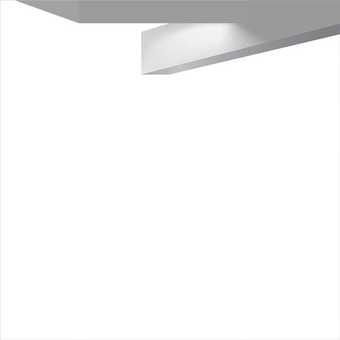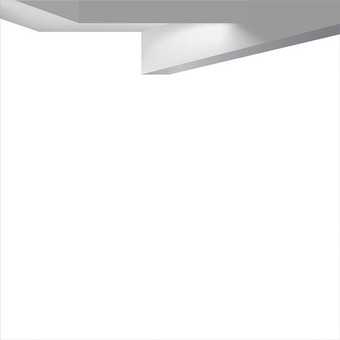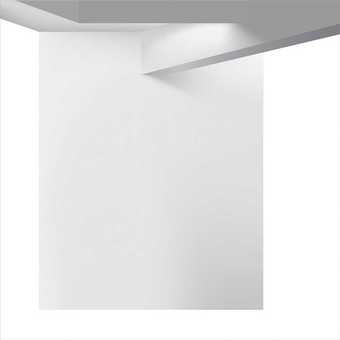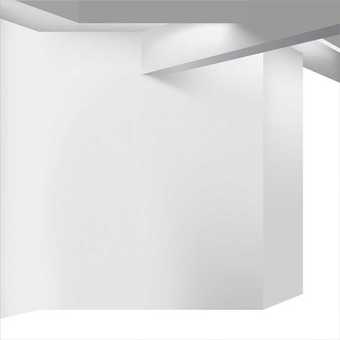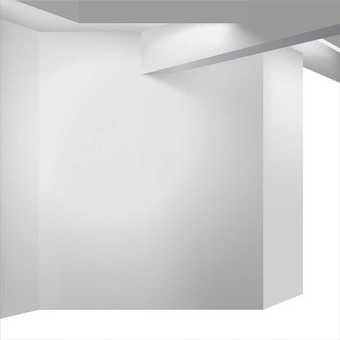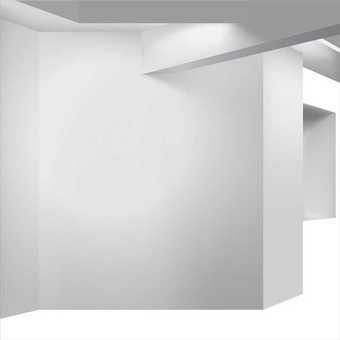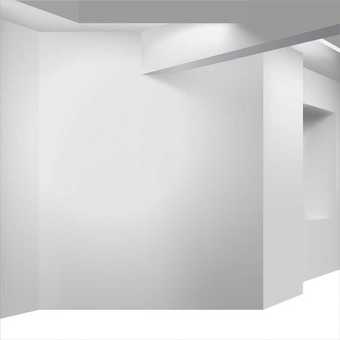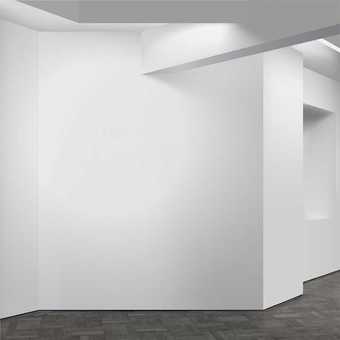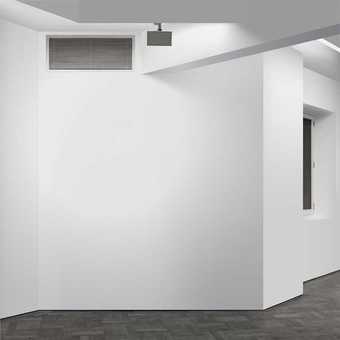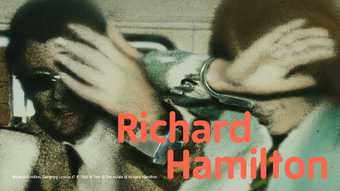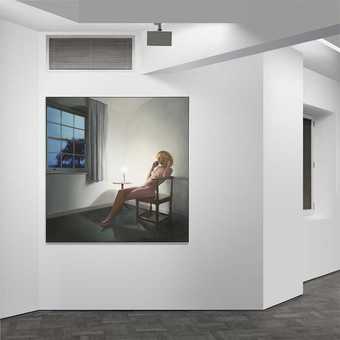
Fig.1
Richard Hamilton
The annunciation 2005
Inkjet digital print 440 x 440 mm
© Richard Hamilton
The annunciation 2005 (fig.1) is one of the few prints by Richard Hamilton that in its faithful simulation of a real, or potentially real, place comes close to the effect of the photographs that are its source. Like many of Hamilton’s recently editioned works, The annunciation is a digital ink-jet print. It was created from a number of photographic sources on a Macintosh G5 using Adobe Illustrator and Photoshop, and published as an edition of sixty, with six artist’s proofs, in Hamilton’s home-based digital studio at Northend Farm.1
In Painting by Numbers, his 2006 London exhibition at the Alan Cristea Gallery, Hamilton displayed his most recent editions, which included The annunciation and the related Chiara & Chair 2004. In the accompanying catalogue he explored the relationship of photography to digital printmaking, a long-time preoccupation of his. In the introduction Hamilton tells the anecdote of one loyal collector who had declined to purchase The annunciation. When asked why, the collector replied, ‘It’s just a photograph.’2
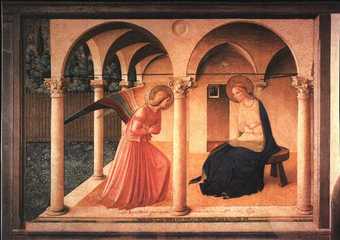
Fig.2
Fra Angelico
Annunciation c.1440–20
Fresco
2300 x 3210 mm
Monastery of San Marco, Florence (north corridor)
Hamilton describes The annunciation as a ‘direct response to Fra Angelico’s great annunciation fresco to be found in the corridor of San Marco’ (fig.2). 3 The print is as much a critique of the photographic and digital media with which it is made, as it is an examination of an art work and theme that have long obsessed Hamilton. In allaying and aggravating our uncertainties through an abstruse exploitation of its medium, this image begins to assume some of the numinous qualities associated with the work of fourteenth-century century painters such as Fra Angelico.
In The annunciation Hamilton renders a gallery interior with a secondary image displayed within it. This internal image, which appears to be a photorealist painting of a seated nude female, hangs on a wall. The wall is parallel to the plane of the print, a spatial construction that evokes the sensation of standing within a gallery. Indeed, much of the visual information supplied in the print (the white painted walls and the industrial lighting and flooring) reinforces our conception of the space as such. That Hamilton’s annunciation should be located in the pristine, but minimalist, interior of a gallery seems a deliberate choice: the ‘modern art space’ may be thought of as a contemporary parallel to the unembellished chambers of the San Marco monastery. Hamilton invites us to practise our secular rituals of reverence, just as Fra Angelico intended his viewers, the resident Dominican friars, to genuflect in imitation of Gabriel while repeating an ‘Ave’ before the sacred image.4
In the Painting by Numbers catalogue, Hamilton discloses the origin of the gallery space depicted in the print. He describes his process for generating seven pieces (one per wall) for a 1995 show called Five Rooms held at the Anthony d’Offay Gallery in London. 5 His suite of seven photograph-derived works (called Seven Rooms) represented as many rooms in Hamilton’s house. He first photographed each of the exhibition walls in the Gallery (including floors, spotlights and beams) and scanned them into his computer. He then digitally placed the cropped and modified photographs of his own home onto the scans of the gallery walls. Each resultant four-foot high Cibachrome print was laminated onto canvas and installed on the gallery wall it depicted.6
Both the photograph of the wall that appears in The annunciation and the photograph that formed the basis of the figurative ‘painting’ on that wall in the print were derived from the d’Offay exhibition. The wall photograph represents the d’Offay wall onto which Hamilton had previously placed an image of his bathroom; the final piece, Seven Rooms – Bathroom, was shown in Five Rooms as part of the Seven Rooms suite. The image used for the ‘painting’ in The annunciation was a photograph taken of Hamilton’s bedroom, which he shifted to another wall for the Five Rooms exhibition.7
html PUBLIC "-//W3C//DTD HTML 4.0 Transitional//EN" "http://www.w3.org/TR/REC-html40/loose.dtd"

